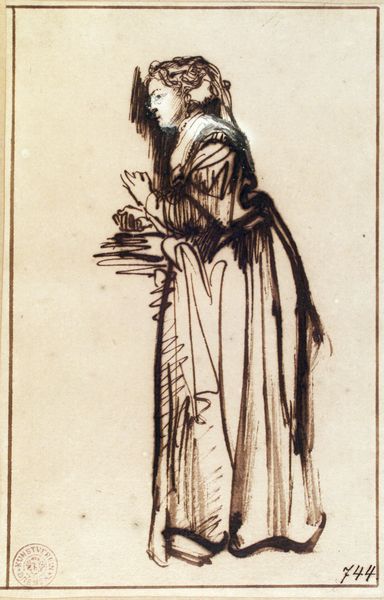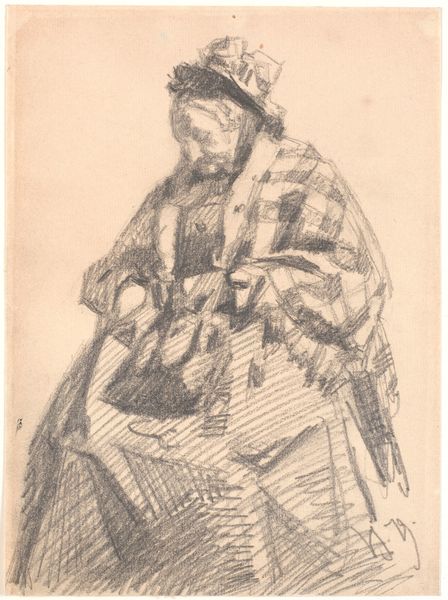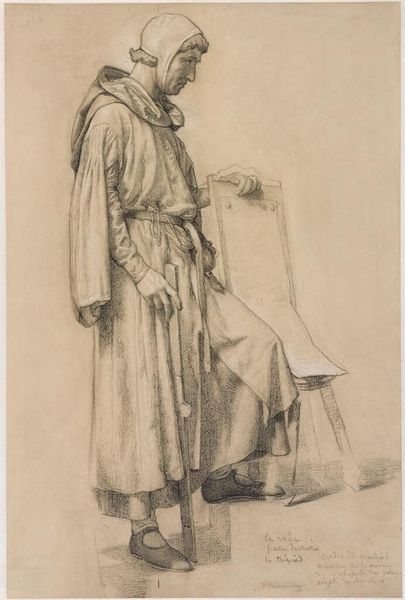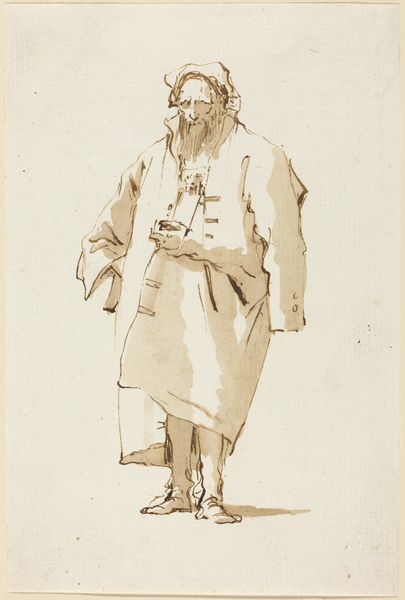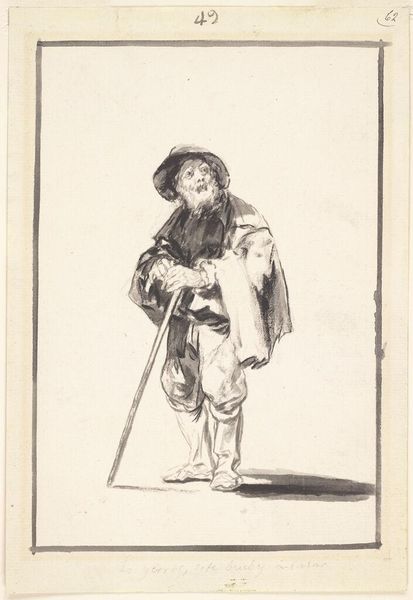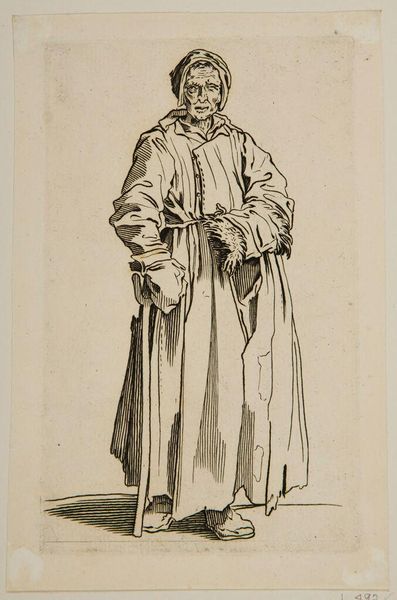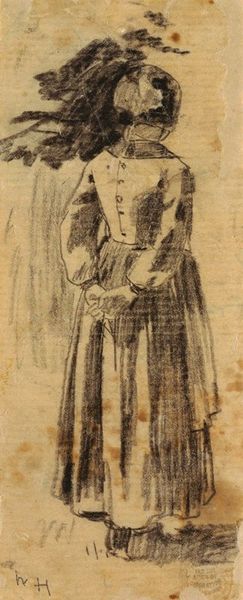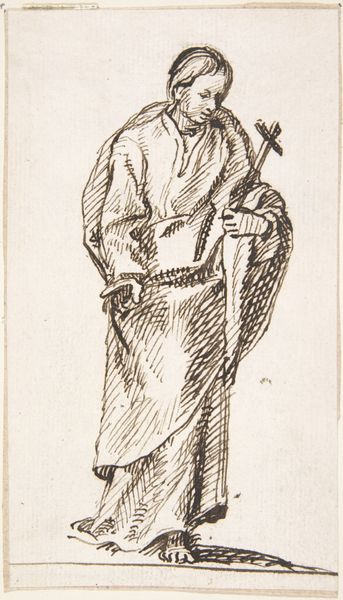
watercolor
#
portrait
#
oil painting
#
watercolor
#
expressionism
#
costume
#
watercolour illustration
#
watercolor
Copyright: Public domain
Curator: Standing before us is Kuzma Petrov-Vodkin's "Costumes and make-up to the tragedy of Pushkin's Boris Godunov", created in 1923 using watercolor. Editor: The colours! I am struck by the deep blue of the main figure’s robe. There’s a kind of gravity in that single hue which communicates immediately. Curator: It’s fascinating to consider what those costume choices might convey. Blue has often symbolized melancholy or introspection. Perhaps Petrov-Vodkin hints at the character's internal struggles. Note, too, how the design blends Russian folkloric tradition with theatrical convention. Editor: Yes, the construction of form generates an incomplete feeling—almost cubist. See how Petrov-Vodkin renders this figure within the context of the Russian avant-garde? It lacks full development. And this deliberate flatness serves the dramatic intensity, creating an intentionally disturbed field of representation. Curator: The secondary figure reinforces that impression of a mind fractured by guilt and torment. Think about Pushkin’s Boris: a figure haunted by his actions to become Tsar. This echoes throughout the ages—a leader burdened by moral compromise. Editor: You draw me to this symbolic interplay, but there is a beautiful austerity created simply from the material handling: light, gauzy, unfinished washes create dimension, with careful modulation of color generating an atmosphere that underscores its own symbolic charge. Curator: Consider how expressionism permeates the composition. It transcends historical drama, echoing inner turmoil as a universally relatable aspect of the human psyche. That’s a consistent quality in his approach across themes. Editor: Agreed. We could explore that sense of internalized agony via form endlessly, revealing layers in ways traditional portraiture could never convey. Curator: This speaks to why the piece holds significance outside theatrical or literary context. Editor: Precisely, thank you, this makes my interpretation all richer and deepens my aesthetic reception.
Comments
No comments
Be the first to comment and join the conversation on the ultimate creative platform.

